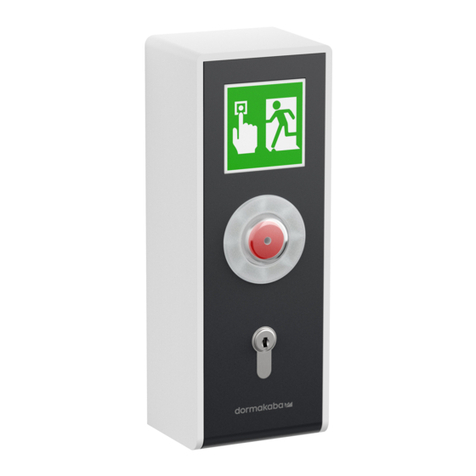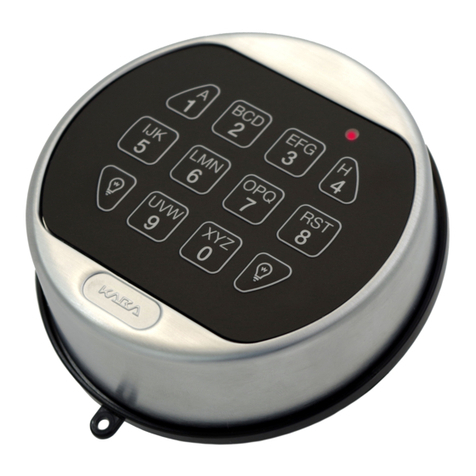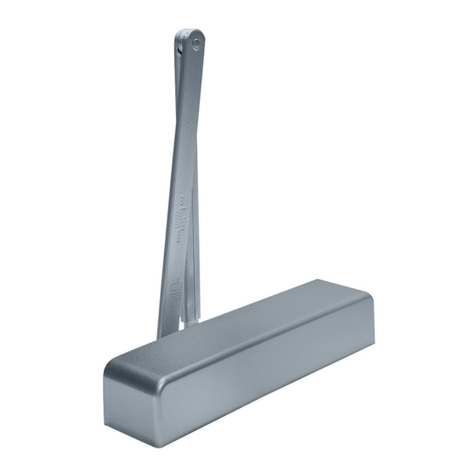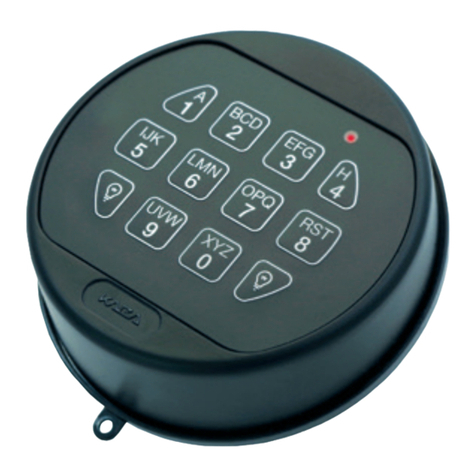
dormakaba Quick Start Guide
4
2 Safety
Automatic startup KTV P/S/A
Moving components
Weather conditions
WARNING!
Risk of injury due to automatic start-up of the
revolving door!
The revolving door can set itself in motion au-
tomatically. If there are people in the revolving
door, they may be at risk of injury.
• Never turn the revolving door on or off when
people are in it.
• Release the emergency stop button only
once there are no longer any people in the
revolving door and the issue causing the
emergency stop has been resolved.
WARNING!
Entanglement, crushing, and cutting hazard dur-
ing operation of the revolving door!
As the revolving door rotates, a danger of en-
tanglement, crushing, and cutting may arise at
the closing edges.
• Immediately activate the emergency stop if
a person gets between the closing edges.
• Ensure that children do not play in or around
the revolving door.
• Ensure that there are no persons in the
revolving door before the emergency stop
switch is unlocked and that the folded door
wings are brought back into starting posi-
tion.
Reason: The revolving door automatically
continues the current program setting after
a time interval.
WARNING!
Danger to life due to bad weather conditions!
Operating the revolving door under bad weather
conditions (e.g. thunderstorm, lightning, tem-
pest) may lead to life-threatening injury or
death.
• Check weather conditions before operation.
• Immediately discontinue operation under
bad weather conditions and lock the door as
needed.
• Make sure that the revolving door can be
operated safely under the given weather
conditions.
1 About this quick
start guide
Scope of this guide
This quick start guide provides an overview of the opera-
tion and securing of the KTV revolving door. This quick
start guide should be kept accessible to the staff at all
times in addition to the operating instructions.
This quick start guide does not replace the operating
instructions. The operating instructions must also be
available and followed for any work carried out on the
revolving door by the personnel.
Target audience of this guide
Operator
The operator uses and operates the revolving door within
the limits of the intended use.
The facility operator will inform the operator of the fol-
lowing information, depending on which revolving door is
involved:
• How to act in case of fire or a hazardous situation
• Function and operational modes of the revolving door
• Positioning and function of the operable safety
equipment
• Operation of the revolving door
• Folding the door wing (revolving door with bookfold
turnstile)
• Creating an emergency exit (revolving door with
bookfold turnstile)
• Creating a transport opening (revolving door with
foldable turnstile)
• Possible dangers of improper behavior
When needed, the operator has access to the key/code
for the program switch of the revolving door and the key
for the key switch of an electric night shield.
Special equipment or options
This quick start guide sometimes describes special equip-
ment or options which may not be installed in the system.
These are marked with a symbol (*). The details of what
this system is equipped with can be found in the docu-
ments that have been supplied with it.
Illustrations
The illustrations serve to provide a general un-
derstanding and may differ from the design of
the revolving door that is actually delivered.































